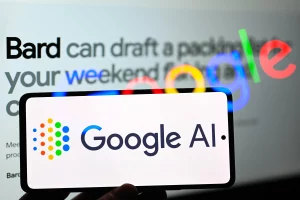Text-to-Speech (TTS) artificial intelligence (AI) technology is quickly becoming a potent instrument that converts written text into spoken speech in a society that is always moving toward automation and convenience. Text-to-Speech AI enables hands-free engagement, giving users on a variety of devices a seamless and interesting experience. TTS AI is influencing the future in ways that are becoming essential to our everyday lives, whether it is for accessibility, content consumption, or effective customer service. This article delves into case studies, examines the advantages of TTS AI technology, and offers real-world instances of how it might be used.
What is Text-to-Speech (TTS) Artificial Intelligence?

Text-to-Speech AI is a branch of artificial intelligence that converts written text into spoken audio. Using deep learning and natural language processing (NLP) algorithms, TTS AI systems can mimic human speech patterns, intonation, and even emotions. This technology can make digital content accessible to a broader audience and is commonly used in devices like smartphones, computers, and smart home assistants.
As TTS AI advances, it’s no longer restricted to robotic or monotonous speech. Modern TTS voices are becoming increasingly human-like, thanks to sophisticated machine learning techniques. This evolution enhances the user experience and allows businesses to engage audiences more effectively.
Key Benefits of Text-to-Speech AI Technology
1. Enhanced Accessibility
One of the most impactful benefits of TTS AI is its ability to make digital content accessible to everyone, especially individuals with disabilities:
- Visual Impairment: For visually impaired users, TTS provides an invaluable resource for accessing text-based content, be it websites, books, or navigation instructions.
- Dyslexia and Learning Disabilities: TTS can support people with learning disabilities, making it easier for them to consume written information and navigate online resources independently.
- Aging Population: For older adults who may struggle with small text or complex digital navigation, TTS provides a solution for staying informed and engaged.
2. Efficient Content Consumption
For people with busy lifestyles or multitasking habits, TTS AI enables hands-free content consumption. Imagine listening to articles, emails, or even lengthy documents while driving, exercising, or cooking. TTS offers an effortless way to stay informed without requiring continuous screen time.
3. Improved Customer Service and User Experience
Many companies now incorporate TTS AI into their customer service operations. Virtual assistants and chatbots can leverage TTS to interact more naturally, reducing the need for human agents:
- 24/7 Service Availability: TTS-driven virtual assistants can handle customer queries around the clock.
- Consistent Tone and Brand Voice: TTS allows businesses to maintain a consistent brand voice, creating a seamless and cohesive customer experience across all platforms.
- Reduced Waiting Time: With TTS AI, customers can receive faster responses to basic queries, freeing up live agents for more complex interactions.
4. Multilingual Capabilities
Global businesses can use TTS AI to reach a wider audience by converting text into multiple languages. Advanced TTS systems can now accommodate various languages and dialects, making it easier to communicate with customers across regions. This feature is especially valuable in e-learning, tourism, and customer support industries.
5. Cost-Effective Solution for Voiceover and Narration
Producing voiceovers for e-learning, corporate training, or marketing content can be costly and time-consuming. TTS AI provides a cost-effective alternative to hiring professional voice actors, especially when content needs frequent updates. TTS voices can be customized to match brand identity, enabling quick and consistent audio production without high expenses.
Practical Applications of Text-to-Speech AI
1. Education and E-Learning

TTS is increasingly used in educational platforms to enhance the learning experience:
- Audiobooks and Learning Resources: Educational platforms and publishers can provide audiobook versions of textbooks and other resources, making content accessible to a broader audience.
- Interactive Learning: TTS enables interactive learning experiences, where students can listen to questions, answers, and explanations, enhancing engagement and retention.
- Language Learning: TTS AI can be instrumental in language education by helping learners hear accurate pronunciations and intonations, creating a more immersive experience.
Example: Duolingo, a popular language learning app, uses TTS AI to help students practice and listen to their target language in a natural, conversational tone.
2. Smart Homes and IoT Devices
TTS AI is a cornerstone in the functionality of smart home assistants:
- Hands-Free Assistance: Users can control various aspects of their smart homes, such as lighting, temperature, and security, through verbal commands. The assistant can respond in a natural voice, improving user comfort.
- Personalized Responses: Advanced TTS systems allow smart home devices to tailor responses based on user preferences, creating a seamless user experience.
Example: Amazon Alexa and Google Assistant employ TTS to create lifelike, responsive interactions with users, offering everything from weather updates to bedtime stories.
3. Automotive and Navigation Systems
In-car TTS systems offer hands-free information access, allowing drivers to stay connected without taking their eyes off the road:
- Real-Time Navigation Instructions: TTS-enabled GPS systems deliver clear and timely navigation instructions, making driving safer and more convenient.
- Entertainment: With TTS AI, passengers can listen to news articles, audiobooks, or podcasts on demand during long trips.
Example: BMW and Tesla integrate TTS AI into their vehicles to provide turn-by-turn directions, road safety alerts, and personalized information.
4. Healthcare and Therapy
In healthcare, TTS AI provides support for both patients and medical professionals:
- Patient Engagement: TTS enables personalized audio messages, reminders, and health tips for patients, particularly those managing chronic conditions.
- Mental Health Applications: Therapy apps use TTS for guided meditation, self-help, and cognitive behavioral therapy (CBT), providing consistent and private support for users.
Example: Apps like Woebot, a mental health platform, use TTS AI to deliver therapeutic interactions and provide emotional support to users anytime, anywhere.
5. Business and Customer Service
For businesses, TTS AI transforms customer engagement:
- Virtual Customer Agents: TTS AI can handle simple inquiries and frequently asked questions, providing a quick response time for users.
- Product Announcements and Marketing: TTS can be used in interactive voice response (IVR) systems to deliver marketing messages, product updates, or promotional offers to customers.
Example: Bank of America’s virtual assistant, Erica, uses TTS AI to provide account information, manage transactions, and offer financial advice, all through natural voice interactions.
Case Studies of Text-to-Speech AI in Action
BBC’s Interactive News Reader
Objective: BBC wanted to make its content more accessible and engaging for visually impaired audiences and those on the go.
Solution: BBC implemented TTS AI to convert its news articles into audio. Users can now listen to the latest news directly from the BBC website, allowing hands-free access to information.
Outcome: Increased accessibility and engagement among BBC’s visually impaired audience, as well as busy professionals who prefer audio over reading.
Domino’s Pizza Voice Assistant
Objective: Domino’s sought to streamline the pizza-ordering process and reduce wait times for customers calling in orders.
Solution: They introduced a TTS AI-powered assistant that takes orders over the phone in a conversational tone, asking clarifying questions and offering promotions.
Outcome: Reduced customer wait times, increased order accuracy, and improved customer satisfaction by providing a seamless ordering experience.
Google’s AI Assistant for Phone Calls

Objective: Google aimed to enhance its AI assistant by enabling it to handle real-world calls for users, like making reservations or appointments.
Solution: Using advanced TTS AI, Google Duplex can speak to people on the phone in a natural, conversational tone, even including pauses and ‘ums’ to sound more human.
Outcome: Google Duplex was able to secure reservations and appointments on behalf of users, demonstrating the potential of TTS AI to manage daily tasks and save users time.
Challenges of Text-to-Speech AI Technology
While TTS AI has numerous benefits, it faces some challenges:
- Accent and Dialect Recognition: Adapting TTS to accurately represent various accents and dialects is complex and requires large datasets for diverse training.
- Privacy Concerns: Some users may be uncomfortable with AI technology that sounds very human-like, fearing data security risks.
- Misinterpretation: If TTS systems misinterpret text context or tone, it can lead to misunderstandings or reduced effectiveness, particularly in customer service.
Despite these challenges, ongoing advancements in AI are addressing these limitations, enhancing the reliability and realism of TTS systems.
The Prospects of AI Text-to-Speech Technology
The future of TTS AI looks promising, with significant growth expected in various industries. Here are some emerging trends to watch:
- Voice Cloning and Personalization: Future TTS systems will offer even more personalized voices, allowing users to select voices that match their personality or preferences.
- Context-Aware TTS: Next-gen TTS systems will understand context better, adjusting tone and emotion based on the message’s intent.
- Integration with Augmented Reality (AR) and Virtual Reality (VR): As AR and VR grow, TTS will play a crucial role in creating immersive environments by providing real-time narration and interaction.
Final Thought
Text-to-Speech AI technology is a game-changer for accessibility, productivity, and user experience; it’s not just a convenience. TTS AI is changing the way we use technology, from facilitating the access of digital content for those with disabilities to offering hands-free information across a range of businesses. TTS will probably become an essential component of our daily lives as it develops further, powering everything from our smart devices to the way we access and use information while on the road.
FAQs
1. How does Text-to-Speech AI work?
TTS AI converts written text into spoken words by using NLP and machine learning to analyze the text and produce a voice output. Advanced TTS systems can mimic human-like voices, incorporating natural intonation, pauses, and even emotion.
2. Is TTS technology reliable for business use?
Yes, TTS technology has advanced to become a reliable solution for businesses. It’s commonly used in customer service, marketing, e-learning, and other fields to provide hands-free, accessible communication. Businesses can benefit from consistent voice quality and automated customer interactions.
3. Can TTS AI be customized?
Absolutely. Many TTS providers allow customization to match brand tone, voice, and personality. Some TTS systems also support multiple languages and dialects, making it suitable for global businesses.
4. Is TTS suitable for all types of content?
TTS is ideal for content that is meant for listening, such as articles, audiobooks, customer support responses, and navigation instructions. However, for highly complex or emotionally nuanced content, human narration might still be preferred.
5. What are the privacy implications of TTS?
While TTS itself doesn’t inherently compromise privacy, devices that use TTS (like smart assistants) may collect data to improve user experience. It’s essential to use TTS solutions that adhere to data privacy regulations and inform users about data usage.












